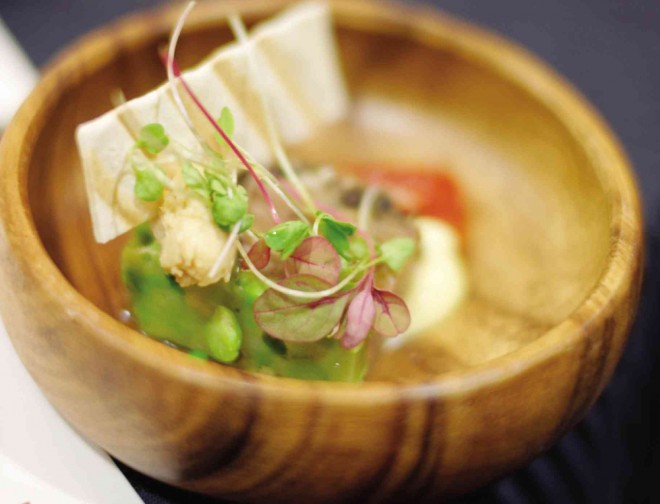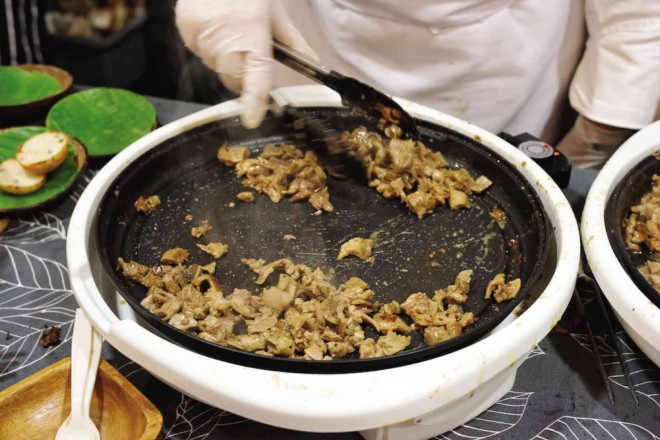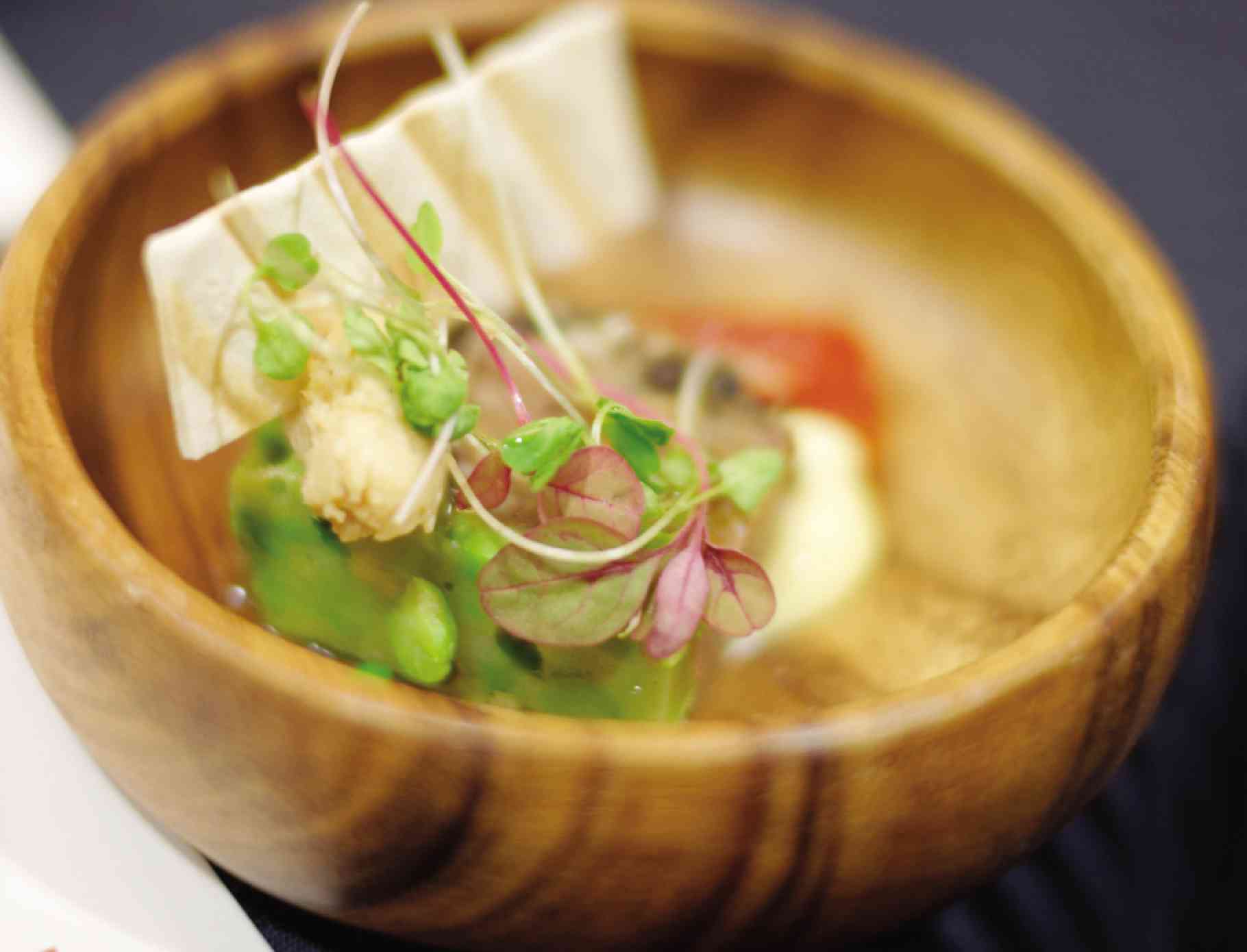
In the halcyon days before cable television, when there were only five channels to choose from, I guested on a breakfast show and demonstrated before a groggy audience how to cook mussels in white wine.
Because the show was running out of time, we had to pretend that the mussels had been cooked through. I handed a raw mussel to the host, who gamely bit into it and proclaimed: “Delicious!” before quickly disposing it the moment the camera cut.
I have never been invited to cook on television again.
Now that the whole oeuvre of Julia Child has been uploaded onto the Internet, the half-century-old cooking program (from which one can still learn a thing or two) is in sharp contrast to the slick, overproduced shows about chefs in some duel or another on cable TV. Child drops things, spills sauces and batters, and pokes things to check if they’re cooked.
She was many things, but she never was a line cook in a restaurant; she never achieved that prestidigitation that chefs who have been cooking for many years do at the stove— though this may be the very reason she was able to connect with homemakers who attempted her omelette and souffles, or her famous boeuf bourguignon.
I bring this up because, although Madrid Fusión Manila was one big party, the daily program of events consisted of lectures and discussions, almost all of them with a cooking demonstration onstage. Cooking while people are watching is difficult enough as it is, but having to talk while doing it with an unfamiliar stove and equipment is more difficult still.
Questions
I was able to catch only a few of the events, but I was glad to see that many of the questions Philippine food writers are faced with took center stage: Why isn’t our cuisine better known abroad? What makes it Filipino? And does it really have to be so brown?
Many ideas were exchanged at the podium that I thought presented new ways of looking at old questions.
Claude Tayag bravely took on the adobo and, rather than work his way toward a conclusion of a definitive recipe, turned a question on its head: There are as many adobo recipes as there are households in the country, and everyone claims theirs is the best, so how do we even know that we’re talking about the same dish?
Tayag’s answer: Adobo isn’t a dish, it’s a process, a cooking technique which pre-dated Spanish colonial rule.
They saw something that looked vaguely familiar and called it “adobo” (which means something else, quite different in Spain and Mexico).
It makes perfect historical sense while silencing the adobo pedants who insist that theirs is the only genuine approach.
Bruce Ricketts was equally impressive, though the connection with his chosen (or assigned) theme of seasonal ingredients was a bit tenuous. Ricketts is at his best in an open kitchen, describing what he’s making as he does it. His presentation felt as though he were in his own kitchen, improvising with ingredients and then delivering it with a shy smile, the main difference being that we didn’t get to eat it.
The impromptu, improvisational approach to creating memorable flavors led to one of the questions chefs are constantly asked: Where do you get your inspiration?
This is a great question to ask Ricketts, as he is one of those chefs whose ideas seem to come out of nowhere, and he seems to produce instant classics and have the culinary equivalent of perfect pitch.
There is something inherently Filipino about this privileging of accuracy over precision—just as no two kitchens cook the same adobo, Ricketts never cooks the same dish twice.

Stark contrast
This was in stark contrast to the precise, almost laboratory-like approach of the Spanish chefs, whose demonstrations had to be channeled through a simultaneous interpreter, who it seemed was working alone. Usually these jobs are done by pairs or even groups, because this remarkable skill stutters when it comes across a number or an unknown phrase, which requires a pause.
We saw some amazing demonstrations from the international chefs. Elena Arzak deserves special mention, because she explained not only her processes but also the reasons she used them.
But none of these demos seemed like something I would be able to try in my kitchen at home.
The demonstrations and lectures reflected the split that has occurred in the culinary world after they moved on from the classical style.
One movement, largely based in Spain, went down the route of drawing from chemistry and physics to push food to the limits of concept.
The other, rooted in the Anglophone countries, pushed for a return to slow food, simplicity and purity of ingredients.
Both camps are well represented in our local restaurant scene, and not exclusively; some chefs draw from both schools of thought.
There were many others, far too many for me to mention. But it would be impossible to close the chapter on Madrid Fusión Manila without mentioning the special lunch rooms which were a labor of love on the part of the Department of Agriculture, the chefs who participated and the organizers who put these together, working in every capacity, from curatorial to janitorial.
This is one of my visions of paradise: an endless line of friendly faces, most of them familiar, a few of them new acquaintances, all of whom are intent on shoving as much food as possible my way.
The special award for this room goes to Enting Lobaton and his Roast Lamb, sautéed in light gravy and served with grilled malunggay bread.
No official announcement has been made yet, but it seems to be fairly certain that Madrid Fusión Manila 2016 is going to happen. I understand that much of the format is dictated by the principals from Madrid, but I again urge the organizers to make the event more accessible to the public.
Food, after all, is about luring people to the table, and every extra seat is another voice and another pair of hands for the cause of Philippine cuisine.









































